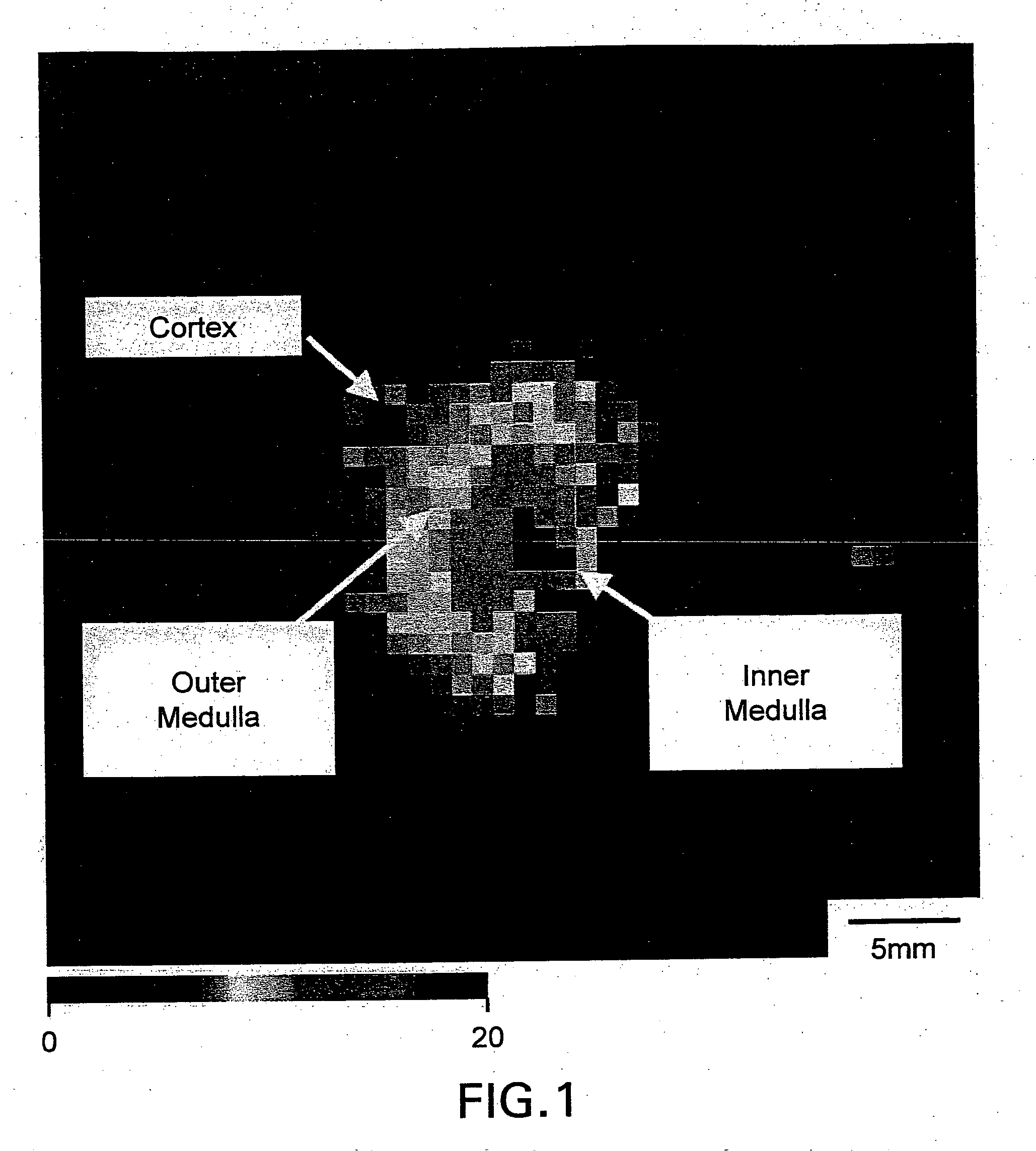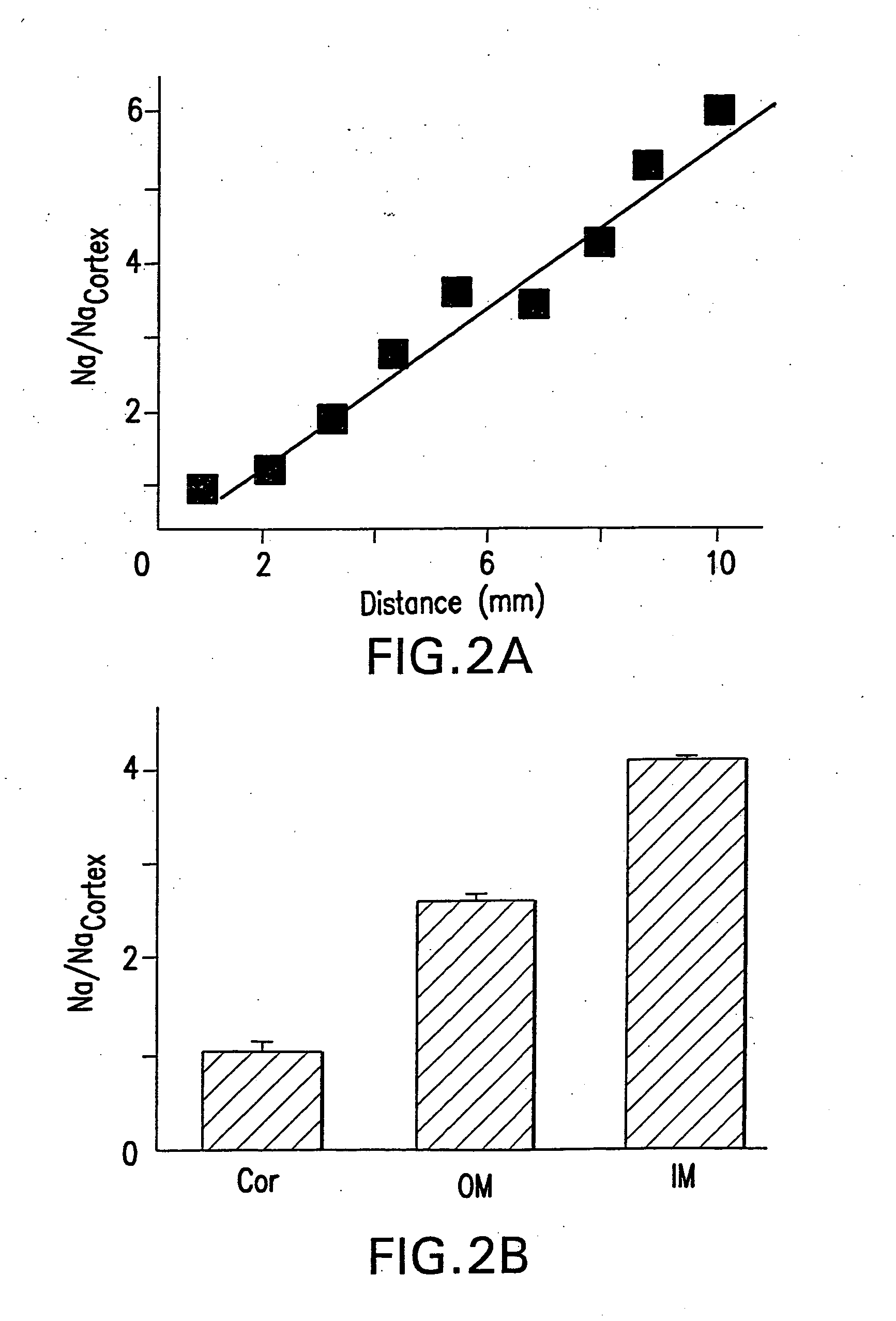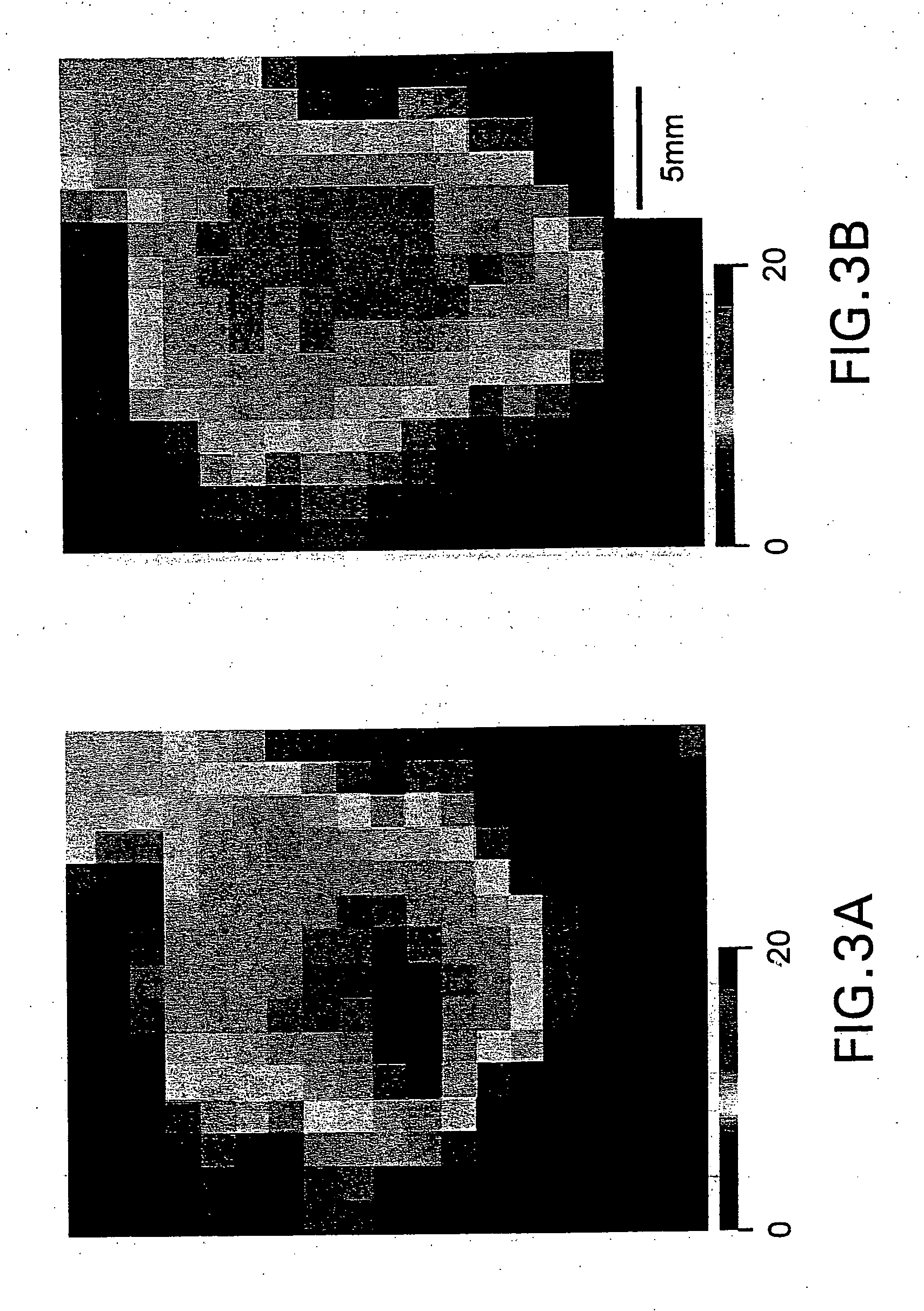Method and apparatus for quantitatively evaluating a kidney
a quantitative evaluation and kidney technology, applied in the field of methods and apparatus for quantitative evaluation of kidneys, can solve problems such as clear tubular damag
- Summary
- Abstract
- Description
- Claims
- Application Information
AI Technical Summary
Benefits of technology
Problems solved by technology
Method used
Image
Examples
Embodiment Construction
MRI of the water protons using various techniques has been applied as a non-invasive tool for assessing renal function, Bennet H F and Li D. MR imaging of renal function. Magn. Reson. Imaging Clin. N. Am. 5:107-126, 1997; and Knesplova L and Krestin G P. Magnetic resonance in the assessment of renal function. Eur. Radiol. 8: 201-211, 1998. For example, the loss of contrast that provided corticomedullary differentiation in T1-weighted MR images served as a non-specific indicator of renal pathology, Marotti M H H, Terrier F, McAninch J W, Thuroff J W. MR in renal disease: importance of cortical-medullary distinction. Magn Reson Med 5:: 160-172, 1987; and Stark D D and Bradley jr W G. Magnetic resonance imaging. St. Louis: Mosby year book, 1992. Functional MR studies using dynamic contrast-enhanced imaging have also been used to evaluate renal vasculature, perfusion and tubular concentration ability Knesplova L and Krestin G P. Magnetic resonance in the assessment of renal function. Eu...
PUM
 Login to View More
Login to View More Abstract
Description
Claims
Application Information
 Login to View More
Login to View More - R&D
- Intellectual Property
- Life Sciences
- Materials
- Tech Scout
- Unparalleled Data Quality
- Higher Quality Content
- 60% Fewer Hallucinations
Browse by: Latest US Patents, China's latest patents, Technical Efficacy Thesaurus, Application Domain, Technology Topic, Popular Technical Reports.
© 2025 PatSnap. All rights reserved.Legal|Privacy policy|Modern Slavery Act Transparency Statement|Sitemap|About US| Contact US: help@patsnap.com



